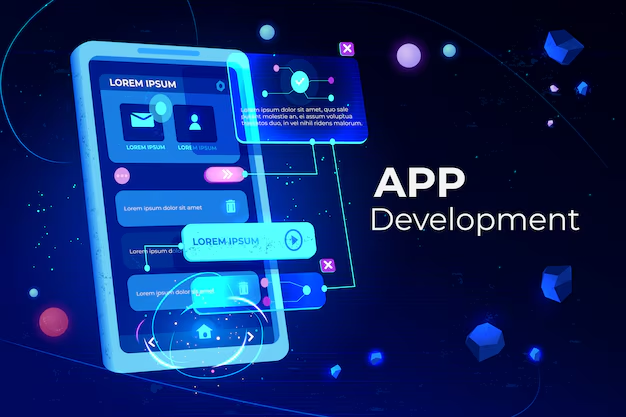
The healthcare industry is undergoing a digital transformation, with an increasing demand for customized applications that improve patient care, streamline administrative tasks, and enhance operational efficiency. However, traditional app development is often expensive, time-consuming, and requires specialized coding expertise. This is where no-code app builder come into play, enabling healthcare professionals, clinics, and hospitals to build applications without writing a single line of code.
No-code platforms empower users to create tailored solutions for patient management, telemedicine, appointment scheduling, EHR integration, and more—all through a drag-and-drop interface. This blog explores the rise of healthcare no-code app builders, their benefits, use cases, and the best platforms available today.
What is a No-Code App Builder?
A no-code app builder is a development platform that allows users to create fully functional applications using visual design tools instead of traditional programming. These platforms provide pre-built templates, drag-and-drop functionality, and automated workflows, enabling users with little to no technical expertise to build customized applications.
Difference Between No-Code and Low-Code

Why No-Code is a Game-Changer for Healthcare
1. Faster Application Development
Traditional healthcare app development takes months or even years, while no-code platforms can deploy applications within days or weeks.
2. Cost-Effective Solutions
Custom-built healthcare apps require significant investment in development and maintenance. No-code solutions cut costs by eliminating the need for dedicated developers.
3. Empowers Healthcare Professionals
Physicians, nurses, and administrators can create applications tailored to their specific needs without depending on IT teams.
4. Improves Patient Experience
No-code tools enable the creation of patient portals, telemedicine apps, and appointment scheduling systems, improving access to care and patient engagement.
5. Compliance & Security
Leading no-code platforms ensure HIPAA compliance, data encryption, and secure integrations with electronic health records (EHRs).
Key Use Cases for No-Code in Healthcare
1. Telemedicine & Virtual Consultations
No-code platforms allow healthcare providers to build secure telehealth solutions, enabling remote patient consultations and virtual care.
2. Custom Patient Portals
Hospitals and clinics can create self-service portals where patients can schedule appointments, access medical records, and communicate with doctors.
3. Appointment Scheduling & Reminders
Automate appointment bookings, send reminders, and reduce no-shows with a no-code scheduling system.
4. Electronic Health Records (EHR) Integration
Easily integrate with existing EHR systems to streamline patient data management.
5. Healthcare CRM & Workflow Automation
Manage patient relationships, automate workflows, and track healthcare performance with custom-built CRM applications.
6. Medical Billing & Revenue Cycle Management
Simplify medical billing, claims processing, and insurance verification using no-code solutions.
7. Clinical Data Collection & Analysis
Enable real-time data collection for clinical research, drug trials, and medical studies with no-code apps.
Essential Features of a Healthcare No-Code App Builder

Best No-Code App Builders for Healthcare in 2025
1. BlueConsole by blueBriX
BlueConsole is an advanced no-code platform designed specifically for healthcare, offering seamless EHR integration, AI-powered automation, and real-time analytics.
✔ Pros: Healthcare-focused, HIPAA-compliant, customizable workflows
✖ Cons: Requires some familiarity with digital platforms
2. Bubble
Bubble is a highly flexible no-code platform that allows users to build complex web applications, making it an excellent choice for healthcare portals and administrative tools.
✔ Pros: Scalable, customizable workflows, integrates with APIs
✖ Cons: Steeper learning curve for beginners
3. Adalo
Ideal for mobile-first applications, Adalo allows healthcare professionals to build custom patient apps with an intuitive drag-and-drop interface.
✔ Pros: Easy to use, great for patient engagement apps
✖ Cons: Limited backend functionality
4. Glide
Glide turns Google Sheets into functional healthcare applications, making it ideal for data collection and internal process management.
✔ Pros: Quick setup, great for internal tools
✖ Cons: Limited design flexibility
5. Mendix
Mendix is a low-code/no-code hybrid solution, perfect for large healthcare enterprises needing scalable and secure solutions.
✔ Pros: AI-driven automation, strong security features
✖ Cons: Requires some technical knowledge
Challenges & Limitations of No-Code in Healthcare
1. Limited Customization
Some highly complex applications may require traditional coding to achieve full functionality.
2. Scalability Concerns
Not all no-code platforms can handle high patient volumes or extensive datasets.
3. Integration Limitations
While most platforms offer API connectivity, some legacy healthcare systems may not integrate smoothly.
4. Security & Compliance
Not all no-code platforms meet healthcare security standards (e.g., HIPAA, GDPR). Choosing a compliant platform is crucial.
The Future of No-Code in Healthcare
The future of healthcare no-code development is incredibly promising. With the rise of AI-powered automation, machine learning, and predictive analytics, no-code platforms will become even more powerful and intelligent.
AI-Driven No-Code Solutions – Automated patient diagnostics and chatbot-driven virtual assistants.
Blockchain Integration – Secure patient data management and tamper-proof medical records.
IoT & Wearable Integration – No-code apps will seamlessly connect with smart health devices.
Conclusion
No-code app builders are revolutionizing healthcare technology, making it easier for organizations to innovate, automate, and enhance patient experiences without relying on expensive development teams.